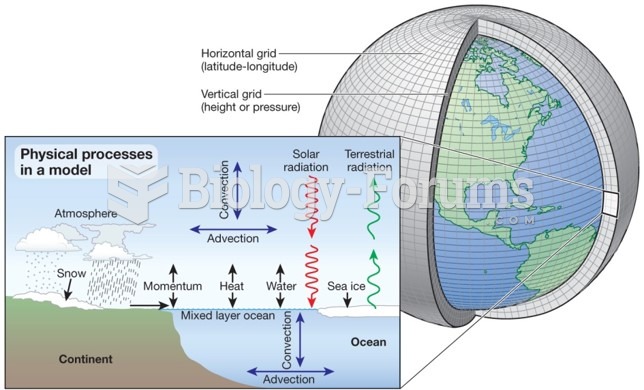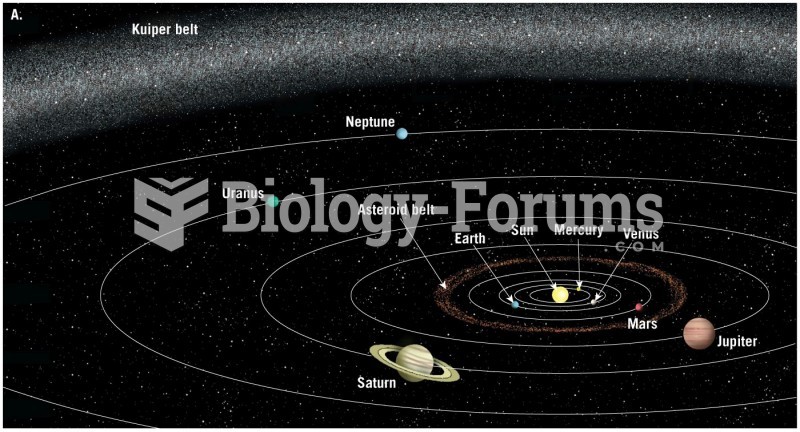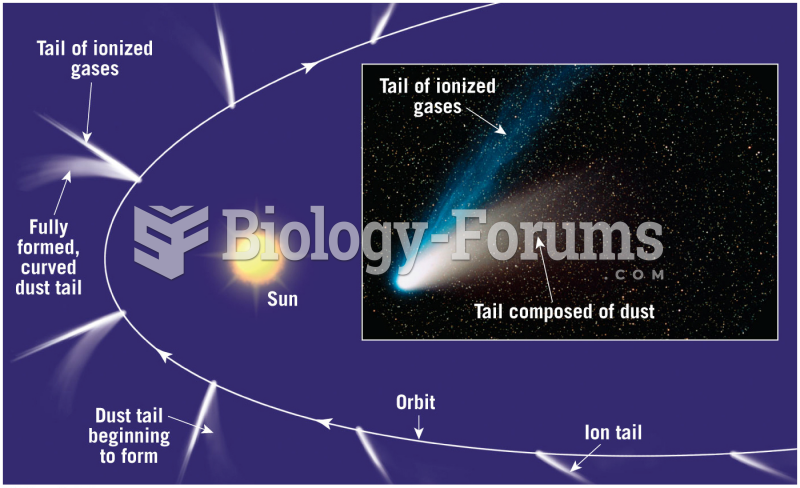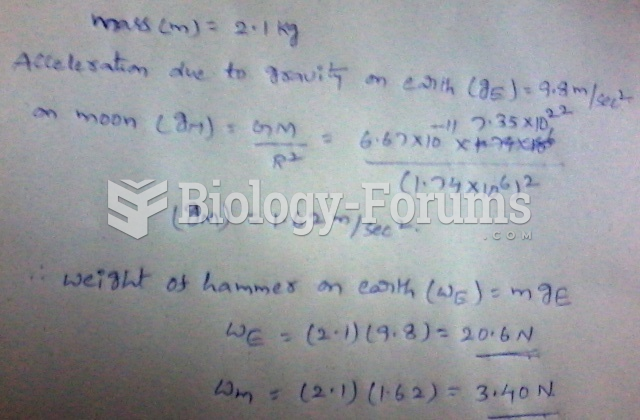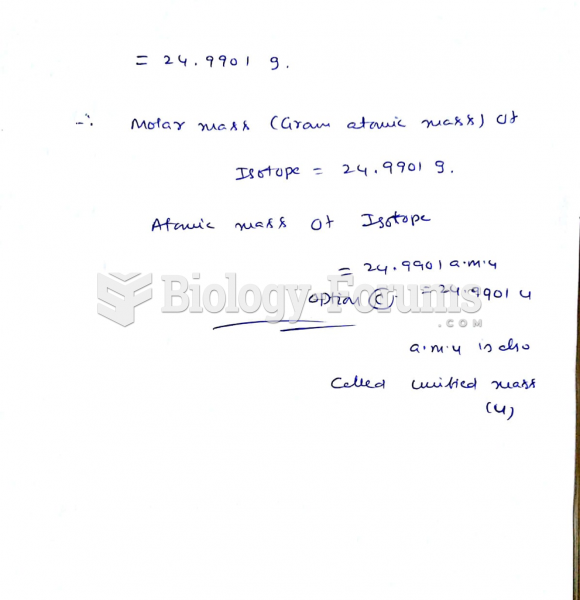|
|
|
Human kidneys will clean about 1 million gallons of blood in an average lifetime.
Medication errors are three times higher among children and infants than with adults.
For high blood pressure (hypertension), a new class of drug, called a vasopeptidase blocker (inhibitor), has been developed. It decreases blood pressure by simultaneously dilating the peripheral arteries and increasing the body's loss of salt.
Patients who have undergone chemotherapy for the treatment of cancer often complain of a lack of mental focus; memory loss; and a general diminution in abilities such as multitasking, attention span, and general mental agility.
On average, someone in the United States has a stroke about every 40 seconds. This is about 795,000 people per year.


